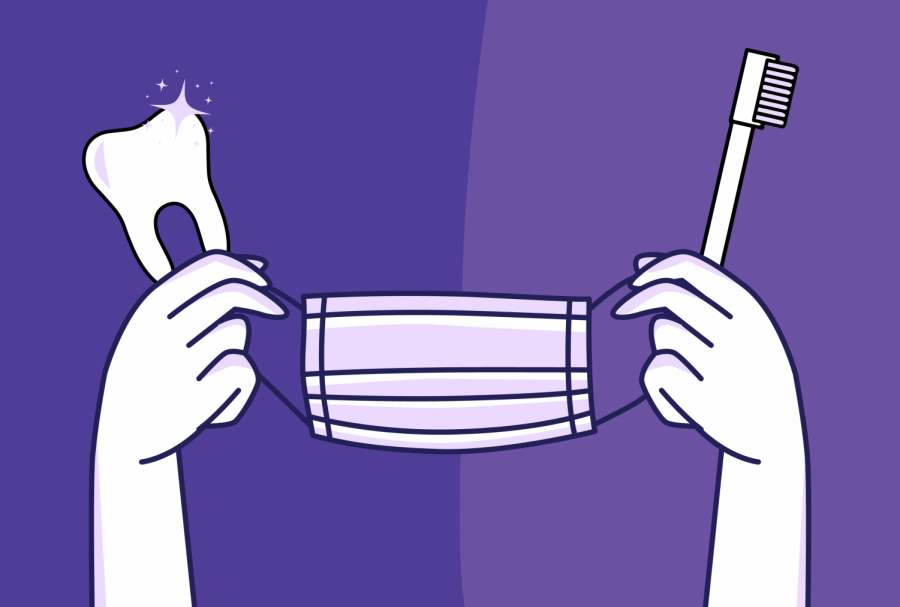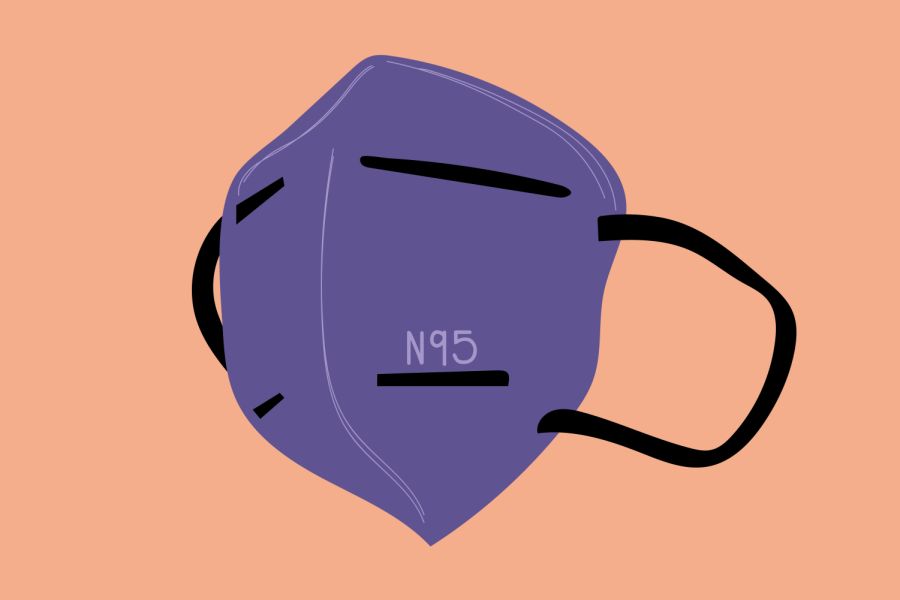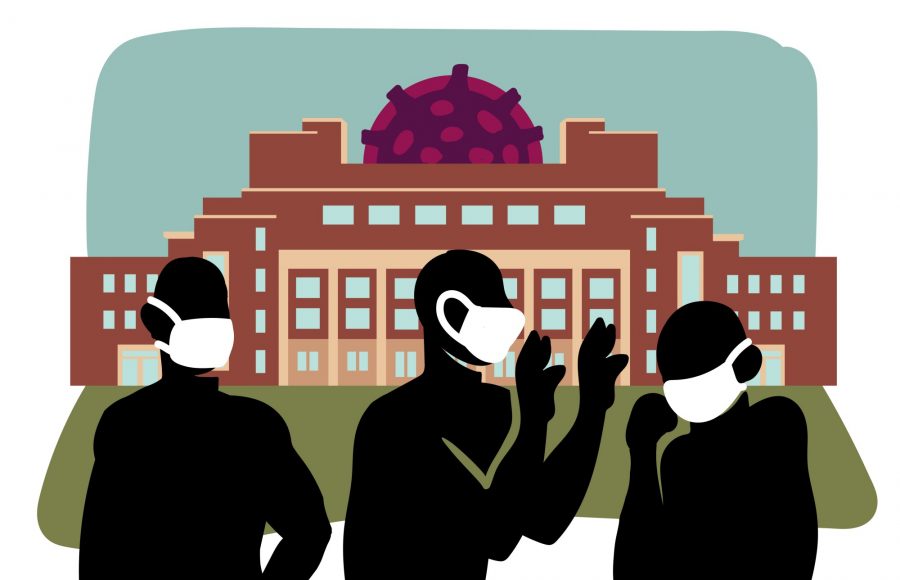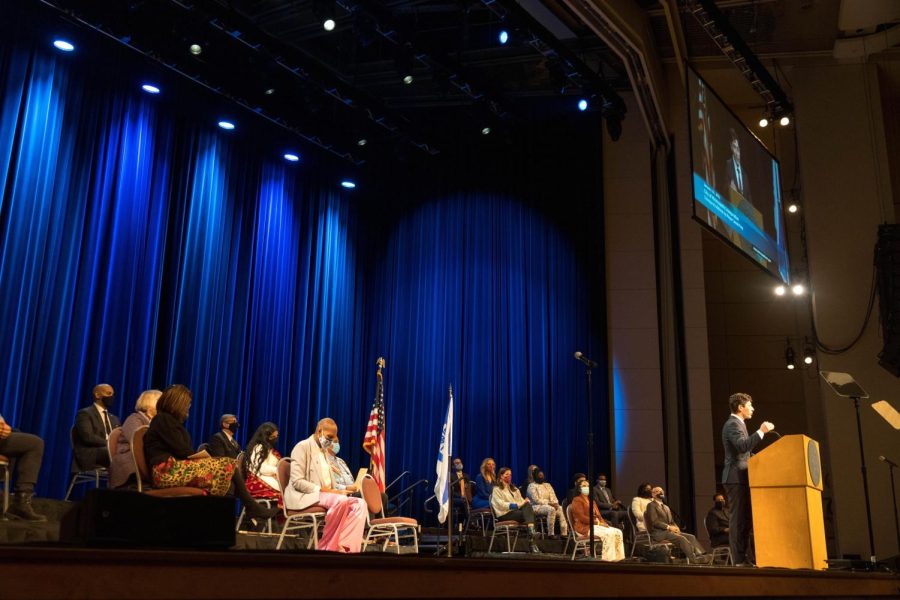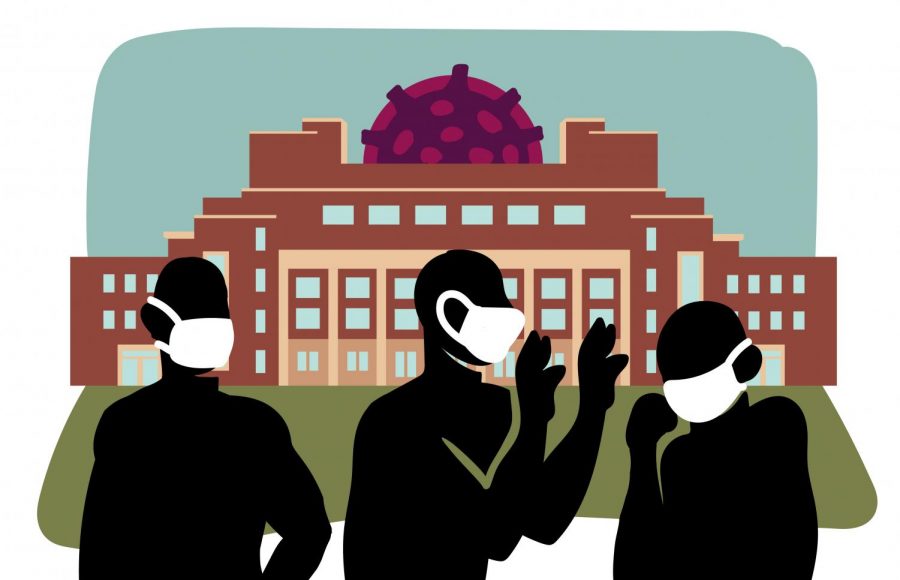The University of Minnesota School of Dentistry administration hosted an online town hall on Oct. 26, where they discussed the school’s response to COVID-19.
The town hall came amid ongoing dental students’ concerns about having required in-person exams, limited safe spaces to study and eat as well as an overall lack of student involvement in decision-making.
Students said they had to buy their own personal protective equipment for labs, or PPE, and had no choice but to cluster together in enclosed spaces in order to watch lab demonstrations closely.
Though the town hall meeting answered student questions and introduced new initiatives to address COVID-19 concerns, administrators are working to implement solutions to lower risks for contracting COVID-19.
“We recognize that, for our students, this academic year is presenting unique and unprecedented challenges,” said School of Dentistry spokesperson Maureen Lovestrand in an email. “As students have questions or concerns, the School’s Office of Student and Resident Affairs is a resource for academic and career counseling, academic support or tutoring, understanding policies and procedures, and helping connect students with student groups, as well as mental health resources.”
Ongoing student concerns
The School of Dentistry gave first- and second-year dental students five disposable masks for the fall semester labs to save the PPE for the upper class dental students, who take care of patients at the University’s dental clinic.
First- and second-year students said faculty members told them to wear the five masks until they were “ripped” or “soiled,” according to a second-year dental student who wanted to remain anonymous due to fear of academic retaliation. A spokesperson for the dental school said students were provided additional masks over the course of the semester.
While many dental students said it was important to prioritize available PPE to the dental students working with patients and health care workers, there was still a need among first- and second-year students.
“I bought facial shields because you could find them anywhere now … all these places are selling them,” the student said. “But the school keeps claiming they don’t have the money to get them for us, after they increased our tuition … I don’t understand where this money is going.”
In-state tuition at the School of Dentistry increased by $1,434 for the 2019-2020 school year. Since 2016, the in-state and out-of-state tuition has continued to increase for dental students.
Keith Mays, the School of Dentistry’s interim dean, sent an email on Oct.14 to dental students about several reports of students not wearing masks or social distancing in non-clinical areas of Moos Tower, like common spaces and hallways.
The email also addressed reports of some dental students “being dismissive to staff and faculty” when asked to put on their masks.
“Your actions reflect you, your fellow classmates, your school, and our profession. This is a time for us to lead by example and demonstrate our commitment to our campus, patients, and school,” read the email from the interim dean.
But some dental students said these incidents were likely a result of having limited safe and socially distanced spaces to eat. Class scheduling gives students a long break in between labs and many dental students stay on campus to eat, study and watch lectures instead of going home.
First- and second-year dental students are separated into smaller lab groups to avoid large gatherings. For example, on certain days of the week, students in groups A and B attend lab from 8 a.m. to 10 a.m. then take a three-hour break before returning to lab from 1 p.m. until 4 p.m.
Some dental students said their classmates who are commuters or student-parents have trouble staying on campus all day. During these breaks, some dental students said they saw a staff member taking pictures of students without permission when they were eating in the hallways.
As winter approaches, many dental students worry that safe and socially distanced spaces will become even more limited.
Another second-year dental student, who wanted to remain anonymous due to fear of academic retaliation, said he could have been one of the students reported for not wearing a mask. While sitting in a lecture hall in between lab sections, he and three other students ate with their masks down while being socially distanced.
“Even though we followed the official policy by social distancing and avoiding large gatherings, sitting in a room that was supposed to be reserved for us, and making sure we were sufficiently apart before deciding to take off our mask to eat, a single out of context glance may have contributed to the sending of Dr. Mays’ email,” the student said in an email.
Two second-year dental students, Lauren Moe and Riley Schulz, worked together to resolve the class scheduling issues with the School of Dentistry’s administration. Before the fall class schedules were released, they raised concerns and provided alternatives.
“I had similar concerns that the schedule was resulting in people having weird chunks of time on campus where they had to be here if they commuted more than 10 minutes and a lot of interaction between groups when they were intentionally trying to separate us. So those things were concerning to me, so I brought that up to administration,” Moe said.
Moe and Schulz shared the two alternative fall schedules to second-year students so they could vote on what they preferred. The majority of second-year students voted to have a different fall schedule. However, the School of Dentistry did not implement these alternative fall schedules.
“We did present these ideas to the administration before our schedule was finalized and in some cases, we either heard responses of, ‘Oh, I’m going to direct you to this person instead of me,’ or we just didn’t hear responses, which was many times the case,” Schulz said.
For the upcoming spring semester, Moe and Schulz said the School of Dentistry has been more receptive to hearing student feedback about the class scheduling.
“As far as the administration, I do think that they’re trying to remedy that now, but they’re doing it in time for spring semester when we’re still kind of left hanging as we go into winter now in this fall semester, where we’re spending it indoors time with classmates,” Schulz said.
Responses from School of Dentistry
In 2016, the School of Dentistry experienced a budget crisis, including a deficit of $1.2 million.
“[2016] was a pretty significant time for us. We were no longer [able] to do certain things like overhead and hiring. … And we, at the end of the day, did not close any programs and we were able to clean some things up and get back on track,” Mays said.
At the town hall meeting, Mays introduced a new tuition plan called a “pseudo cohort tuition model” in an effort to stabilize tuition because of the pandemic. The model would allow an increase in tuition specifically for first- and second-year dental students and freeze tuition for third- and fourth-year dental students. Currently, the model needs to be approved by the University and Board of Regents.
Along with the new tuition model, Mays introduced other COVID-19 initiatives at the School of Dentistry. Sven-Ulrik Gorr, interim associate dean for academic affairs for the dental school, is leading a “COVID-19 Fatigue Workgroup” to review recommendations on the “well-being of the SOD community.” Additionally, a space committee had adapted to identify safe spaces available for students to have lunch and study while socially distanced.
In the last 15 minutes of the town hall meeting, Mays and Gorr answered questions from the dental students. One student asked if Mays felt there was a tension between students and the administration.
“I think that there’s a lot of tension and concern for people and by people,” Mays said. “I think when you put all of us together in this kind of tense time, it’s just tense. But I don’t think it’s about students versus administration.”
Correction: A previous version of this article contained several errors.
The article incorrectly stated the School of Dentistry’s past deficit amount and the tuition increase amount for the 2019-2020 school year. The article also incorrectly stated that the school was projecting a deficit for next year. The story and the headline incorrectly conveyed reason the dental school hosted the student town hall. A previous version of this article also mischaracterized the approval process for and intent of the pseudo cohort model.
The story has been updated with comment from the School of Dentistry on distributing masks to students.










